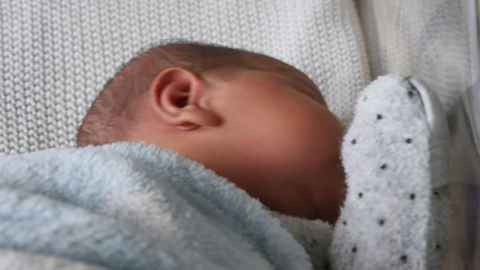Racist uplift practice cause for alarm
10 May 2019
Opinion: The racist and classist practice of uplifting children of the poor should alarm our politicians, writes lecturer and former social worker Dr Ian Hyslop.

Recent concern about the increasing rate of children being uplifted at birth by our state social work agency, Oranga Tamariki, evidences a disturbing return to rescue-mentality foster care. It is a destructive policy and practice which is both unnecessary and avoidable in my experience. The outcomes are discriminatory – demonstrably classist and racist.
Regrettably this trend doesn’t surprise me. Anyone who continues to swallow the rhetoric about the reform of Oranga Tamariki being a once-in-a-lifetime opportunity for transformational change driven by the compelling voices of “our” young people must have their eyes wide shut.
You get the outcomes that you plan for. The writing was on the wall when the then minister, Anne Tolley, announced a review of the beleaguered and under-resourced Child Youth and Family service in April 2015. The Expert Advisory Panel (EAP) review process that followed was a politically orchestrated fait accompli. I know this because I was part of a largely meaningless practice reference group.
This panel was chaired by the conservative economist and all-purpose right-wing public service fixer, Paula Rebstock. The EAP focus was on stemming forward fiscal costs in terms of benefits, prisons and poor health outcomes, which they attributed to inadequate and irresponsible parental care. The panel knew next to nothing about social work with high needs families and simply applied an ideologically narrow social investment lens to a social problem which is, in truth, causally rooted in poverty and social inequality.
The EAP envisaged reducing the forward cost associated with maltreatment by “50 percent over a generation” and, “for Māori by 25-30 percent within five years” (EAP Final Report). This was to be achieved by the early removal of high-risk children and secure placement in safe and loving homes. The echoes of simplistic, naïve and essentially eugenic Victorian sensibility are deafening.
The current spike in forced removals of babies from young, mainly Māori, women is entirely predictable in this context. It is deceptively dressed up as trauma-informed and child-centred practice. I am an old social worker and I realise that children sometimes need to be removed from dangerous situations. I have done this. However, I also know that in most situations it can be avoided if multi-stressed mothers parenting in poverty are adequately supported and if family/whānau are sufficiently empowered and resourced. I have done this too. It is not, as they say, rocket science – but it is emotionally demanding and highly skilled work.
The placement of young Māori into institutional care in the 1970s and 1980s culminated in unprecedented rates of adult imprisonment and associated damage to the fabric of Māori social structures. Puao te Ata Tu, a 1988 report by the Ministerial Advisory Committee on a Māori Perspective for the Department of Social Welfare, told us this. The Royal Commission of Inquiry into Historical Abuse in state and faith-based care is just beginning to scratch the surface of this traumatic history perpetrated in the name of social work.
The antidote is not earlier removal, middle New Zealand love, and stability: take them early, keep them safe and stop the reproduction of costly social disadvantage. We have a new Government. Why on earth do we continue to follow this banal policy and practice prescription? Where is the capitalism with a human face in this risk averse dogma? Surely it is time for a drastic re-think.
According to figures obtained pursuant to the Official Information Act there has been a sharp 33 percent increase in the removal of babies in the time period 2015-2018: a rate increase from 36 to 46 per 1000 births. For Māori in 2018, newborns were removed at the rate of 102 per 10,000 births, compared to a non-Māori rate of 24 per 10,000 births. Surely this overtly racist practice directed to the children of the poor should alarm our politicians. Or does the concept of social well-being not extend to the brown proletariat?
Dr Ian Hyslop is a senior lecturer in the School of Counselling, Human Services and Social Work at the Faculty of Education and Social Work. He worked for 20 years as a social worker, supervisor, and practice manager in statutory child protection practice in Auckland.
This article reflects the opinion of the author and not necessarily the views of the University of Auckland.
Used with permission from Newsroom Racist uplift practice cause for alarm published on 10 May 2019.